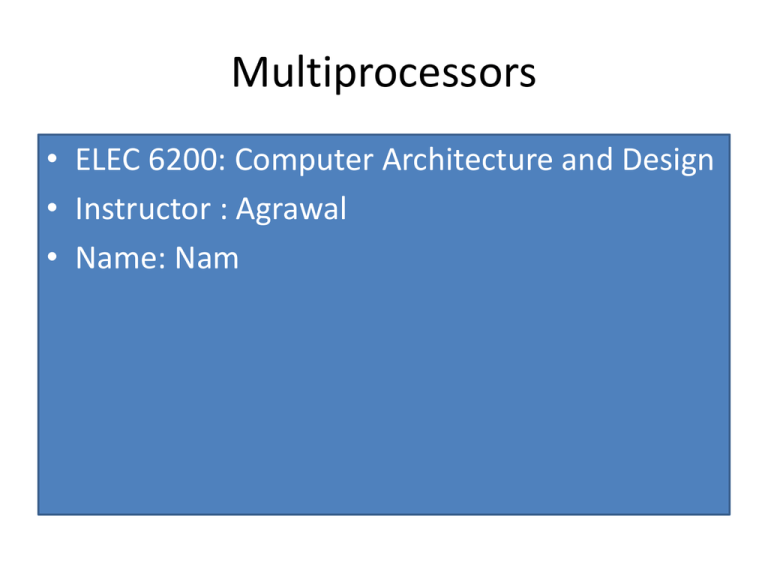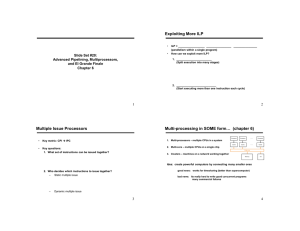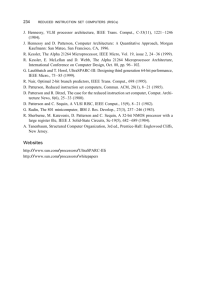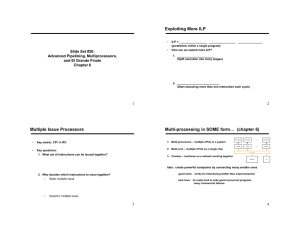Multiprocessors • ELEC 6200: Computer Architecture and Design • Instructor : Agrawal
advertisement

Multiprocessors • ELEC 6200: Computer Architecture and Design • Instructor : Agrawal • Name: Nam Why we have to use multiprocessors? • Definition: Multiprocessors are parallel processors with a single shared address. • Multiprocessors have the highest performance , it is higher than the fastest uni-processor. • Multiprocessors have a lot of more effective applications than a uni-processor: search engines, web servers, databases…. • Multitasking within an application Instruction and data stream of Multiprocessors. • SIMD (single instruction, multiple data): every unit will be executing the same instruction, each execution unit has its own address registers, and so each unit can have different data addresses. • MIMD ( multiple instructions, multiple data): Machines using MIMD have a number of processors that function asynchronously and independently. At any time, different processors may be executing different instructions on different pieces of data • MISD… How multiprocessors work? • How do parallel processors share data? • How do parallel processors coordinate? • How many processors? 1. Multiprocessors communicate through shared variables in memory , all processors can access any memory location via loads and stores 2. As processors operating in parallel, they normally share data. Only one processor at a time can acquire the lock and other processors interested in shared data have to wait until the original processor unlocks the variable so called Lock approach. Or processors can communicate by sending and receiving message. • Parallel processing program: to refer to a single program that runs on multiple processors simultaneously • it is difficult to write parallel processing programs, the programmer must know a good deal about the hardware. Multiprocessors connected by a single bus Processors Processors Processors Cashes Cashes Cashes Single Bus Memory I/O • Each microprocessor is much smaller than a multichip processor, so more processors can be placed on a bus. • Caches can lower bus traffic. • Mechanisms were invented to keep caches and memory consistent for multiprocessors Traffic per processor and the bus bandwidth determine the useful number of processors in such a multiprocessor. Single bus designs are attractive but limited: high bandwidth, low latency, and long length, Limit to the bandwidth of a single memory module as well----> limited number of processors Multiprocessors connected by a network Processors Processors Processors Cashes Cashes Cashes Memory Memory Memory Network • In machines without a single global address space, communication is explicit ;the programmer or the compiler must send messages to ship data to another node and must receive messages to accept data from another node. • Send and receive also have the advantage of making it easier for the programmer to optimize communication: it’s simpler to overlap computation with communication by using explicit sends and receives rather than with implicit loads and stores. New tendency • An alternative to multiple microprocessors sharing an interconnect is bringing the processors inside the chip. In such designs, the processors typically share some of the caches and the external memory interface. • Advantage: amortize the instruction accesses, the latencies associated with chip-to-chip communication disappear ,Shared data structures are also much less of a problem • Challenge lies in software. What architecture makes software easier. Thank You





